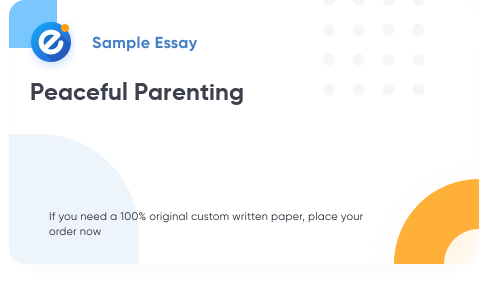
Parents have to make an important decision on whether they should breastfeed or bottle feed their babies. Health experts and lactation consultants recommend breastfeeding as it is the healthiest option for the mother and the baby. However, there are reasons that make breastfeeding impossible, and this results in hardships for mothers as they look for the best option for their babies. The decision on how to feed babies is a personal one because mothers are committed to their children’s nutrition. The paper provides a debatable argument on whether to breastfeed or bottle feed human babies once born. The conclusion will outline the opinion supported by the research.
Positive and Negative Effects of Breastfeeding
The perks of breastfeeding revolve around the fact that breast milk has everything a baby needs for growth and development. However, it lacks vitamin D and fluoride, although a parent can consult a lactation expert on how the nutrients can be administered as supplements (Ford, 2013). Women choose breastfeeding because it has biochemical advantages. For instance, in the first three to five days after birth, babies feed on colostrum which is a yellowish liquid containing disease preventing antibodies. This helps in the protection against certain viruses, germs and bacteria. It also has the ability to ward off infections such as tetanus, chicken pox and measles. Breast milk also has the ability to adapt its composition from day to day to suit the changing needs of the baby (Lauwers, & Swisher, 2015).
Calculate the cost of essay
After a period of about fourteen days, the colostrum is replaced with mature breast milk which is not as thick and has higher fat and cholesterol levels. This is useful for proper development of brain cells, cell membrane and nerve tissues. Similarly, breast milk is sterile and mothers should not be worried about its temperature. In addition, breastfeeding mothers are less susceptible to diseases such as diabetes as well as breast and ovarian cancer (Ford, 2013). Breastfeeding mothers also develop skin to skin contact with their babies thus enabling post-baby weight loss and shrinking of the uterus. This is facilitated by the production of two hormones which are oxytocin and prolactin.
Oxytocin helps in uterus contraction by returning it to its pre-pregnant state as well as minimizing blood loss (Lauwers, & Swisher, 2015). The other hormone helps the mother to relax. It is also a natural and convenient choice for the mother and the baby in the sense that one can breastfeed anywhere at any time. Breastfeeding has always been the recommended way to feed a new-born (Genna, 2012). In fact, health practitioners recommend breastfeeding for the first six months after birth. However, extended breastfeeding is recommendable if a parent wishes to continue. Breast milk contains the right amounts of nutrients which can boost the baby’s immune system.
Limited Time
special offer
A disadvantage for breast feeding is that mothers experience nipple soreness and breast tenderness during the first week after giving birth. In severe predicaments, a medical intervention might be necessary and the mother can be advised to use a nipple shield or a breast pump. In the event of a mother breastfeeding for the first time, they might be uncomfortable looking for a comfortable position (Genna, 2012). Poor latch is also normal as the milk supply is being established. Additionally, there are times when the mother’s milk production might not be sufficient for the baby’s intake. This explains why mothers need a well varied balanced diet as well as fluid intake as they are essential for milk production. The con of breastfeeding is that it might constrain certain parents from breastfeeding for the baby’s benefits.
This is because certain illnesses can be easily passed to the baby. For instance, heavy smokers can pass nicotine to their babies during breast feeding and this may have a significant effect on their wellbeing. Similarly, the long term effect is that if a mother is HIV positive, her baby is at a more vulnerable level of acquiring the virus from the parent (Lauwers, & Swisher, 2015). Other infections such as mastitis and engorgement can also hinder breastfeeding.
Benefit from Our Service: Save 25%
Along with the first order offer - 15% discount, you save extra 10%
since we provide 300 words/page instead of 275 words/page
Positive and Negative Effects of Bottle Feeding
Women choose bottle feeding when they have a drug addiction or an HIV virus which can be passed on to the baby. Mothers taking medicines to treat an on-going health problem should consult a specialist before breastfeeding (Ford, 2013). An advantage of bottle feeding is that it enables fathers to feel closer to their babies as they can spend more time caring for their babies. This makes the father feel like an integral part of his baby’s life thus enhancing child-father relationship.
The other advantage of bottle feeding is that anybody in the family can do it thus giving the mother more time to work or get the well-deserved time with her partner. Moreover, babies digest formula slower meaning a mother will have less feeding times. This can give her more time to relax and get enough sleep (Lauwers, & Swisher, 2015). Another advantage of bottle feeding is that it can be a good source of nutrition if the mother has a medical condition that dictates against breastfeeding. As for the babies, they have specific feeding hours whereby they are given milk and they can sleep when full (Genna, 2012). Therefore, when the mother is in public and the baby demands milk, she will have to resort to looking for some privacy where she can attend to the baby’s needs. However, with bottle feeding, one is not embarrassed by breastfeeding in public because they will only take out the bottle for the baby to suckle from (Ford, 2013).

